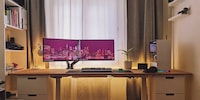
Background information
Community desk setups: every article
by David Lee

Janni's desk setup consists of three parts: a gaming PC, a home server for the family and a workstation, all built into one desk.
Jannis built his triple PC table together with two friends from vocational school. The joint project took several hundred hours of work during his apprenticeship as an electrician. They milled the table for the gaming PC, home server and workstation themselves.
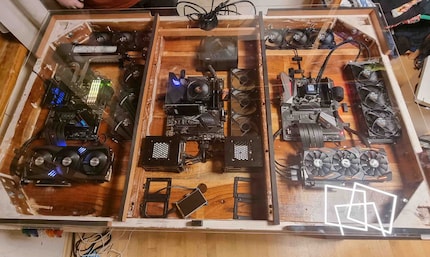
The setup combines Jannis' employees as an electrician with his interest in programming and his love of gaming. It was important to him that he could separate his hobbies from his work. That's why the table ultimately contains three separate systems. A Raspberry Pi with a 7-inch screen is also installed in the centre. This shows the current status of the gaming resources using the Software ModBros.
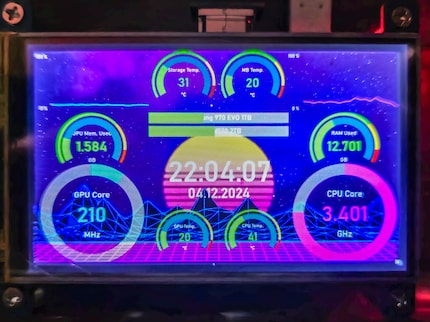
Jannis developed the extensive desk setup together with his vocational school colleagues Natale and Ramón. It is the result of their in-depth work during their training as electricians. Together, they invested around 500 working hours in the setup. Jannis now uses the result every day. However, a great deal of preparatory work was necessary. The three boys drew up a plan for the individual parts in advance and a table also had to be customised.
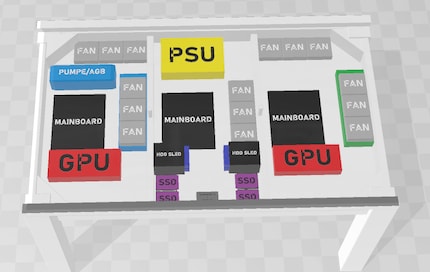
An existing solid wood table served as the basis. This was to be processed in such a way that the three stations could fit inside. They therefore first dismantled the table into its individual parts, milled and oiled them to fit and then reassembled them.
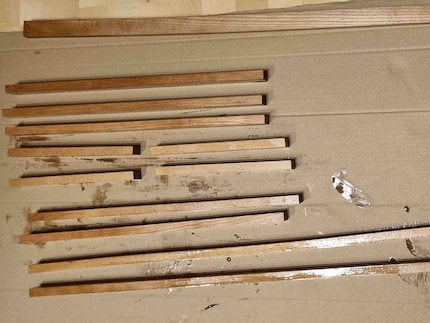
Finally, a Plexiglas plate was to cover all the components. He was able to have the special format supplied by a Swiss company. Thanks to RGB, the individual elements stand out beautifully and are visible at all times.
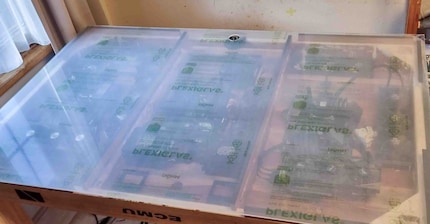
On the left of the table is the water-cooled gaming PC with RGB fans. In the centre is the NAS and on the right is the workstation, which is also used when Jannis wants to play games with friends in his room.
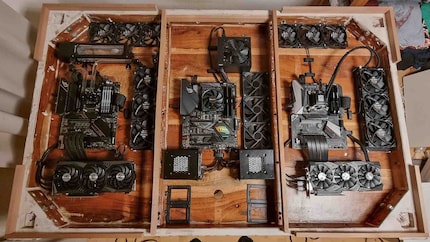
Janni's games and 3D modelling require much more power than his office work and programming. So when creating the gaming part, he focussed on a graphics card with enough power. The workstation is used for editing documents and programming. Jannis would like to keep this data separate.
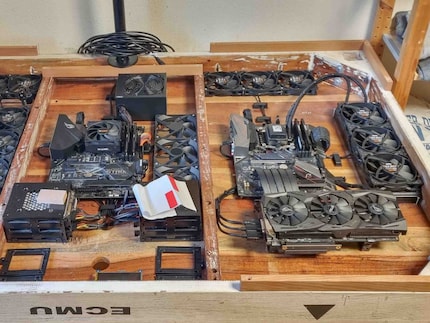
The NAS serves as a communication point for data transfers and is intended to provide quick access to various projects. Jannis has also set up a pool for his family's photos and videos. Jannis is currently considering which login option he would like to use so that his family can access the shared files securely. He is currently using the open source programme TrueNAS Core for the NAS.
To enable Jannis to switch on the three computers individually, he and his two friends have installed switches on the table, demonstrating their skills as electricians. The three switches on the left are already in use for the computers. The last two are currently still in reserve. One of them may also be used for the Raspberry Pi. Jannis is currently still switching this on manually via a plug.
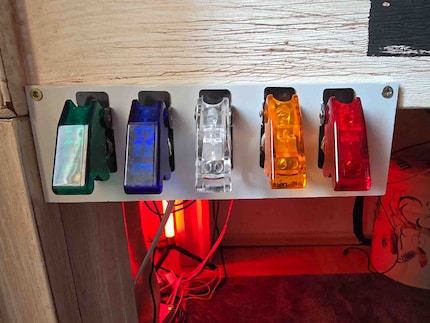
The next upgrade for the PC will probably be the graphics card. Jannis now needs more power for 3D modelling. The NAS also needs a repair. The RAM sticks have given up the ghost.
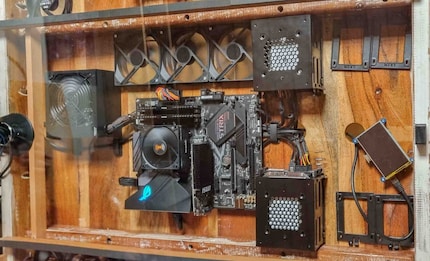
One monitor would not be enough for three systems. That's why Jannis has three monitors on his PC desk. He currently only has an HDMI 1.2 cable for the left-hand monitor, as his HDMI 1.4 cables are too short. This means that it is currently running at a resolution of 1920 x 1080 pixels and at 60 hertz. The cable for the main screen was also too short and is now slightly kinked, leading to a loose connection. This needs to be replaced soon.
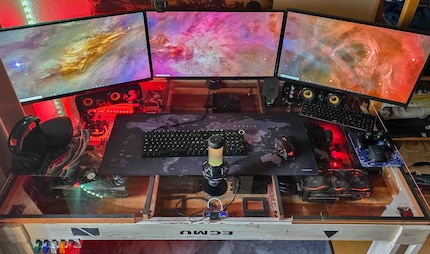
The huge project of the three electricians has brought together a number of parts.
Have you missed a setup? No problem, you can find them all in the overview.
In my world, Super Mario chases Stormtroopers with a unicorn and Harley Quinn mixes cocktails for Eddie and Peter at the beach bar. Wherever I can live out my creativity, my fingers tingle. Or maybe it's because nothing flows through my veins but chocolate, glitter and coffee.
Interesting facts about products, behind-the-scenes looks at manufacturers and deep-dives on interesting people.
Show all
Background information
by David Lee

Background information
by Richard Müller

Background information
by Michelle Brändle